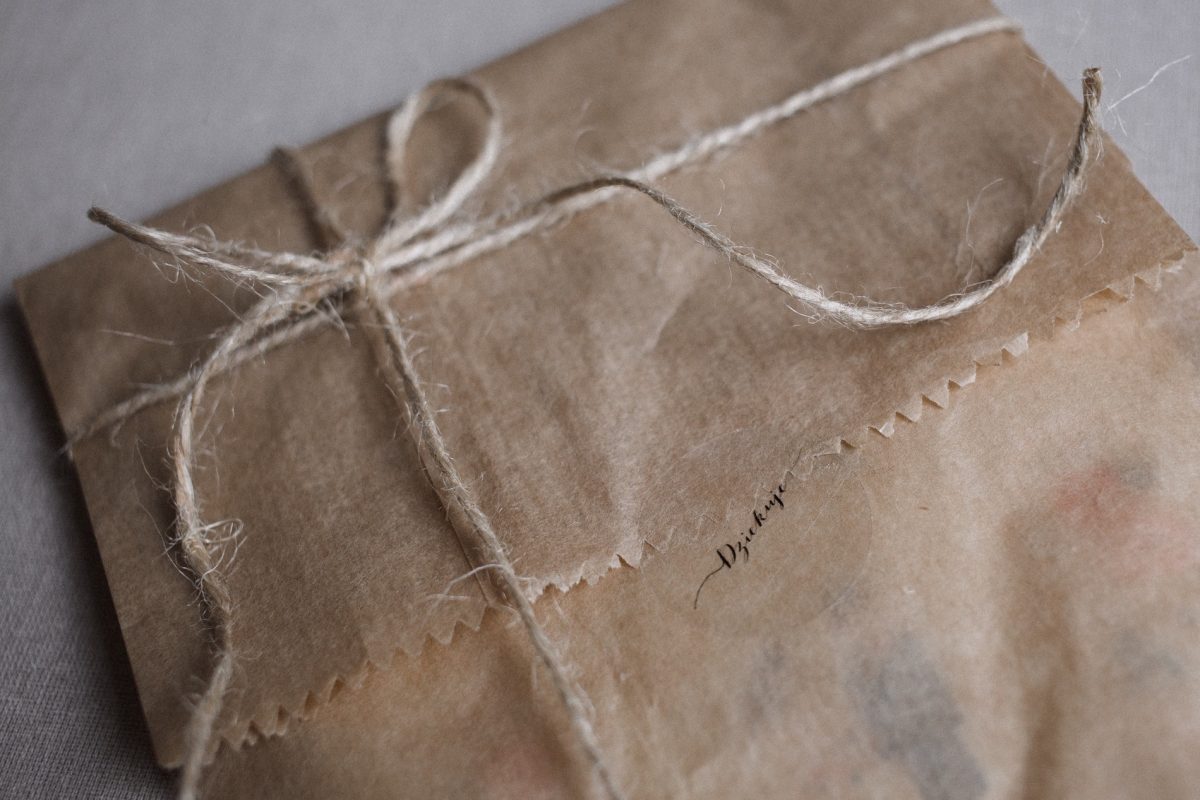Discussions about reducing waste and even being ‘zero waste’ are now entering the mainstream in every retail sector.
Why? Because consumers now take into account environmental practices when deciding what brands to support.
According to Nielsen, 66% of respondents in their 2015 study were willing to pay more for products from businesses committed to a positive environmental impact. This is up from 55% in 2014, and 50% in 2013!
The message is clear: eco-friendliness is now a high priority for consumers.
Due to rising concerns about plastic pollution, plastic free packaging designs are becoming a much bigger talking point. We commonly get questions from our customers on “what packaging materials should I use instead of plastic?” Or “what are the most environmentally friendly ways of packaging products?”
Although packaging without plastic might seem like an impossible dream, there are many green alternatives to plastic available. These not only save on waste – eco-friendly substitutes can also save your business money in the long run!
We’ve rounded up our top plastic free packaging ideas to help your business reduce its carbon footprint.
Sustainable Packaging in eCommerce: How To Maximize Efficiency
Sustainable Packaging: Keeping it Green
What is Green Packaging?
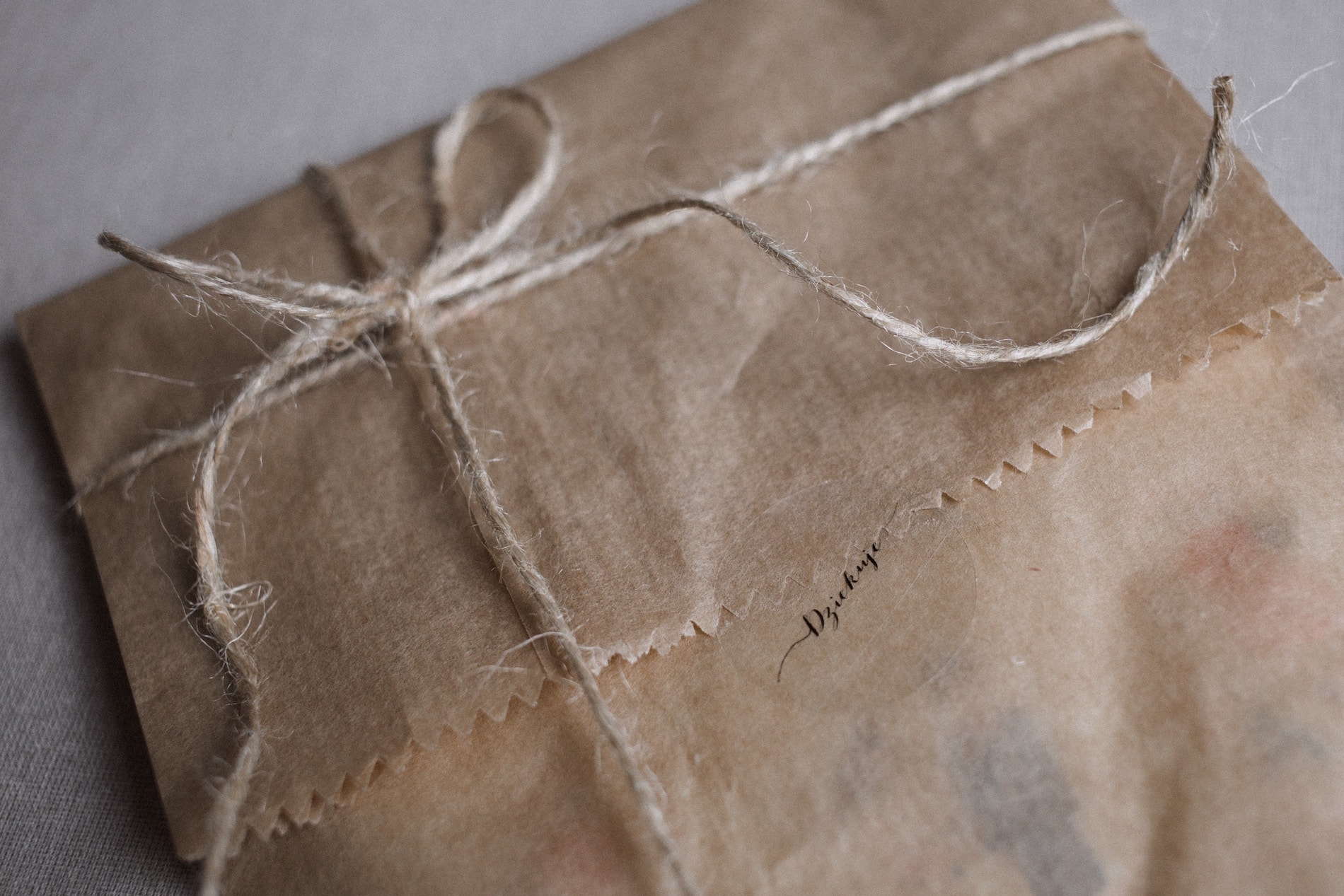
Use Paper Packaging as the Backbone For Your Design
One of the easiest ways to achieve a plastic free packaging design is to use paper as your main packaging material. Paper and cardboard are renewable materials that are easy to source. They are also inexpensive and can be used for a variety of different packaging elements.
The Advantages of Paper Packaging
Paper packaging is easy for consumers to dispose of because it’s fully recyclable. This is important, as one of the biggest complaints about eCommerce packaging is that it uses non-recyclable elements.
Moreover, studies have shown that paper packaging has more benefits than being environmentally-friendly. A survey by the Paper and Packaging Board found that 71% of consumers were more likely to buy from brands that use paper or cardboard packaging. A further 63% saw paper and cardboard packaging as making products appear more high-end.
Paper and cardboard can replace plastic packaging in a variety of different ways, such as:
Boxes and containers
Gift bags
Tissue paper packaging
Packaging filler e.g. crinkle-cut paper
To make your packaging design as eco-friendly as possible, you can use recycled paper and use FSC-certified suppliers. This ensures that your packaging materials have been sourced in the most sustainable way possible. That’s why we use it for our own custom tissue paper!
Because cardboard is a sturdy and durable material, there are also a lot of opportunities for reuse. If you encourage your customers to save your packaging, you can reduce waste overall.
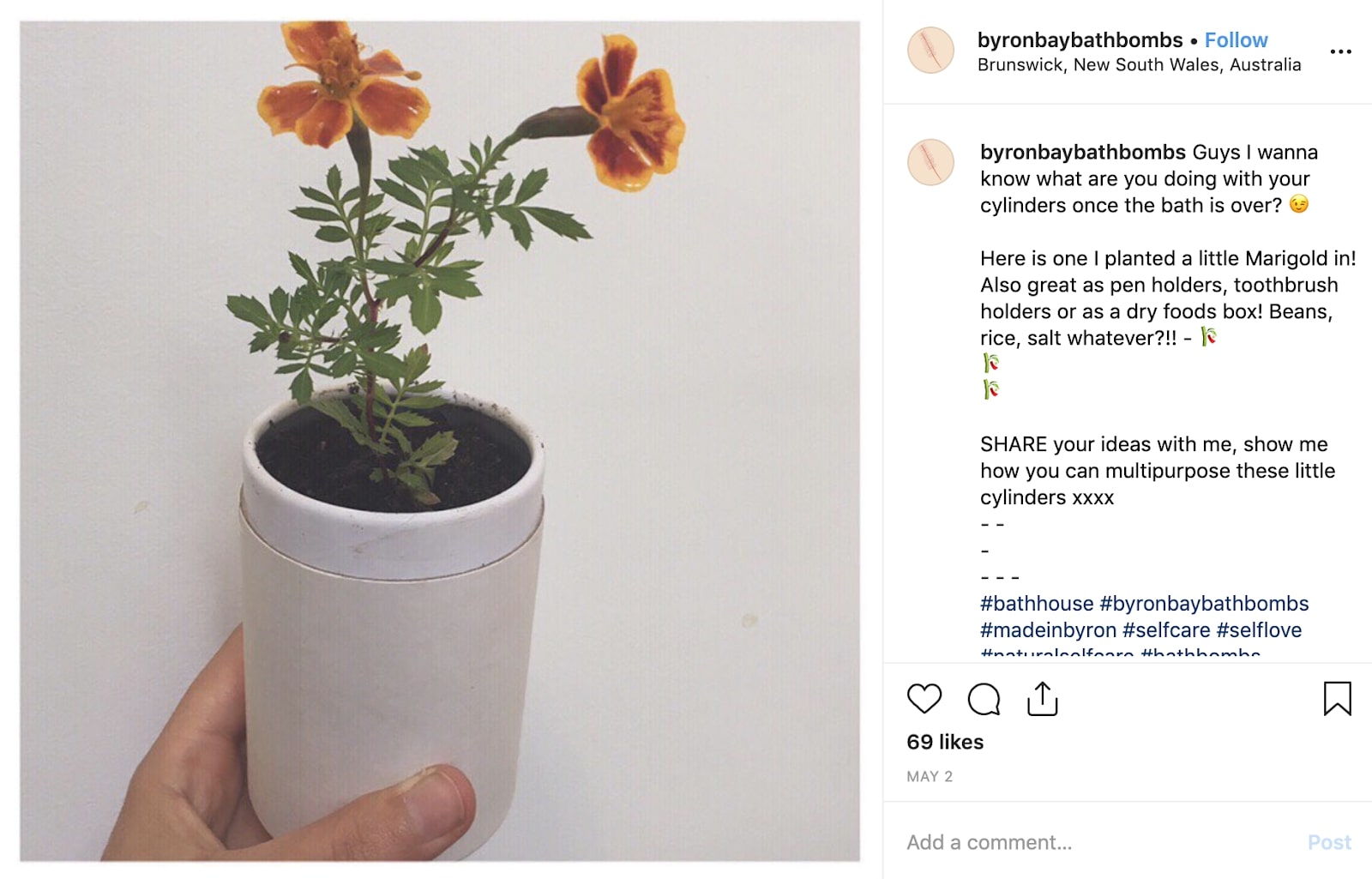
Cosmetics retailer Byron Bay Bath Bombs use completely plastic free bath bomb packaging. The cardboard tubes used to send their products are 100% recyclable, and they also encourage customers to reuse them.
By offering up fun and quirky reuse ideas on social media, they are increasing the chance of their customers following suit!
Avoid Plastic Tape and stickers
Packing tape is an integral part of the order fulfillment toolkit for eCommerce businesses. But regular tape can have a big impact on the sustainability of your product packaging.
Most packing tape is given a plastic coating to make it stronger and reinforce the adhesive. However, the adhesive used in plastic tape weakens cardboard and paper fibers. This makes recycling even your plastic free packaging elements very difficult.
Many plasticized stickers also have the same issue. This makes certain times of the year with higher packaging needs responsible for huge amounts of plastic waste.
In the US, there is a 25% increase in household waste between Thanksgiving and the New Year. Tape, single-use gift wrapping and other packaging elements being the biggest contributors.
However, there are other options. noissue’s custom plastic-free packaging tape has a non-toxic adhesive that doesn’t affect the recyclability of your packaging. It’s also 100% compostable in a home or industrial compost heap!
Swapping out regular stickers for a compostable paper option is also a great way to maintain this decorative element in your packaging!
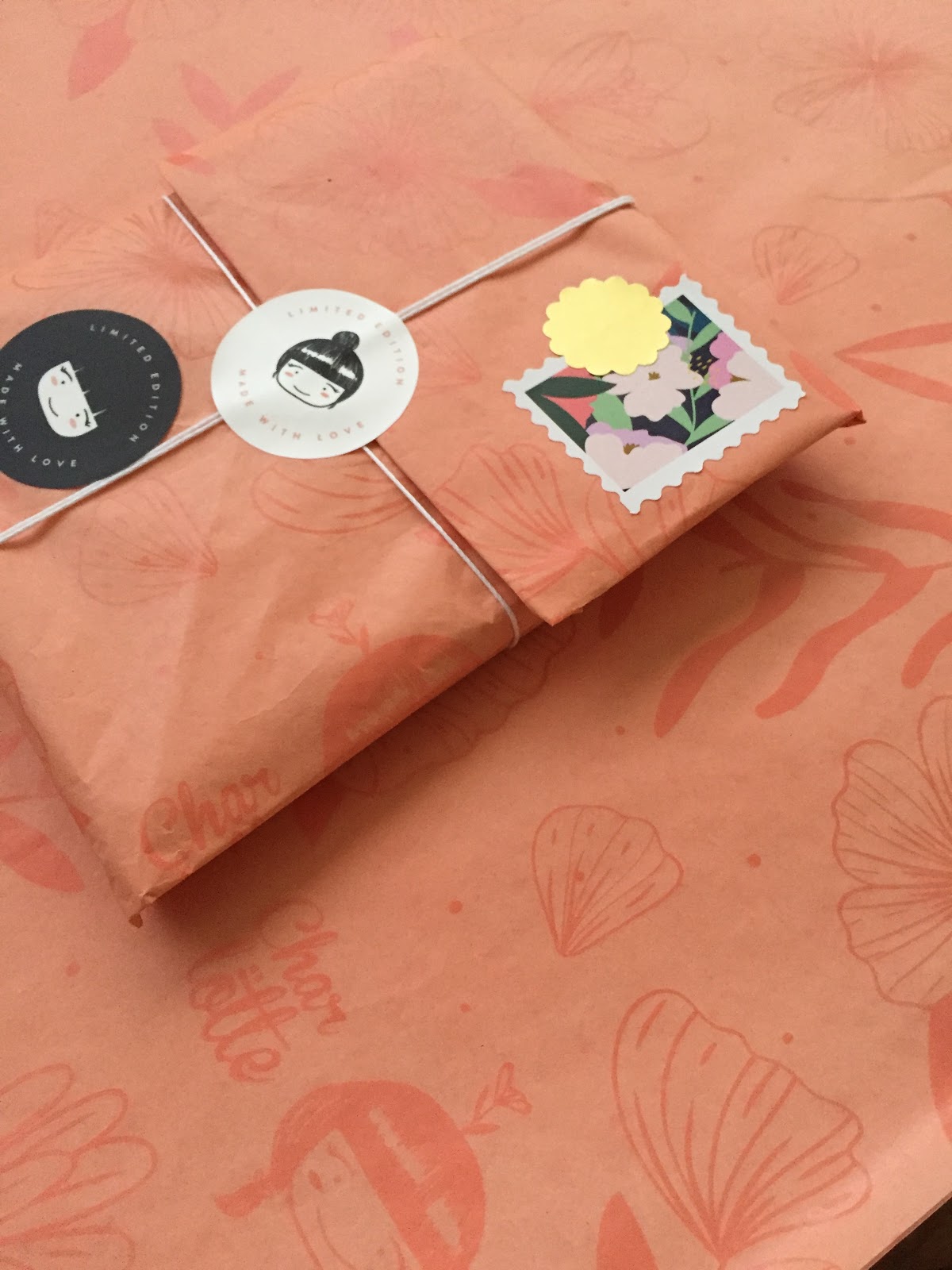
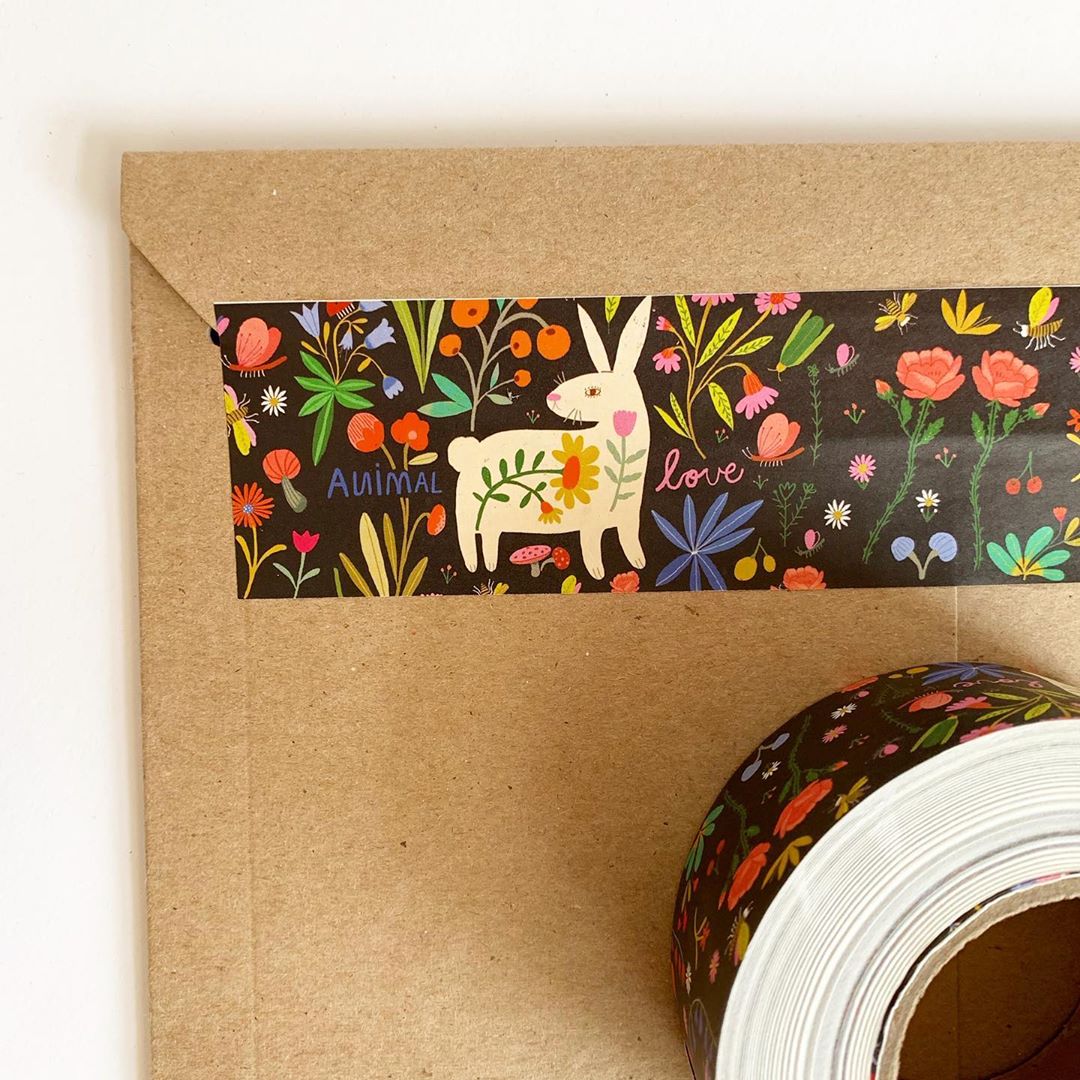
Swap Out Plastic Poly Mailers For Compostable Alternatives
Shipping mailers are a handy way to post your online orders. They cost less per unit than boxes and have smaller dimensions, meaning that you save money on shipping costs too!
However, regular poly mailers are made from soft plastics, which are very difficult to recycle. Switching to plant-based packaging allows your business to have all the benefits of a poly mailer. But without the negative environmental impact!
Our compostable mailers are made of corn starch, which is naturally biodegradable. They break down naturally within six months on a compost heap, leaving no harmful residues behind. It sends a great message to your customers that you care about sustainable living!

By pairing her compostable mailers with some tasteful tissue paper wrapping, Hannah Rumsey is giving her customers an attractive and plastic-free delivery experience!
BUT: Check Whether Plastic-free Packaging is Sustainable For Your Business
We understand if this header makes you do a double-take. It’s a reasonable assumption that plastic-free packaging is automatically sustainable, but it’s not quite that simple.
For example, ‘‘what are eco-friendly materials used for replacing plastic?’ Is one of the most highly-searched questions on Google in relation to packaging design.
Remember: ‘reduce’ is the first out of the 3 Rs. If you are only thinking about finding packaging alternatives to plastic, rather than how you can ship products with less packaging, your design isn’t going to be as eco-friendly as it could be.
There might be places where you still need a green alternative to plastic. But this is the perfect time to review whether you can reduce the amount of packaging you use. Over-packaging is rife within eCommerce, so the answer might surprise you!

Artist Nia Gould of Niaski recently undertook the ‘Naked Cards’ pledge by removing the cellophane sleeves from her greeting cards. As she uses noissue tissue paper, it made little sense to replace the sleeve with an eco-friendly alternative.
By removing plastic and streamlining the amount of packaging used overall, the result is a far more sustainable packaging design!
If Plastic Packaging is Unavoidable, Find Ways to Lower its Impact
It might not be possible for you to have a completely plastic free packaging design. New eco-friendly packaging solutions are hitting the market every year. But R&D for plastic alternatives is still a very new field.
If eco-friendly alternatives don’t meet performance requirements for your products, then they aren’t sustainable. For example, body lotion will leach out of its container if it isn’t waterproof. That business is then saddled with the cost of replacing the product and trying to repair their brand’s integrity.
So, there may not yet be a viable alternative available for your business. But there are steps you can take to make your use of plastic packaging as low-impact as possible.
Offering refills of liquid products
Using only recycled plastics
Eliminating unrecyclable shrink wrap
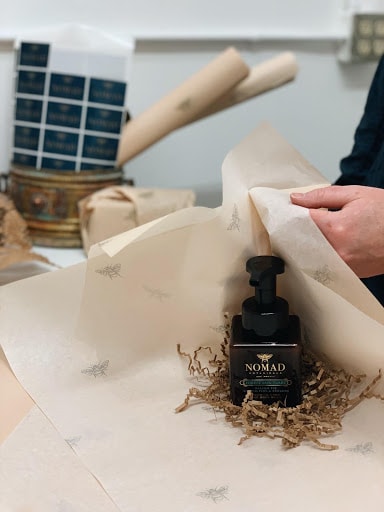
Aromatherapy brand Nomad Botanicals uses glass bottles for their products wherever possible. But this isn’t suitable for their body washes due to the risk of breakage. To make up for the usage of plastic bottles, they offer a free refill service to keep bottles in use for as long as possible.
Plastic-free packaging goes a long way towards creating a more eco-friendly outlook for your business. Adopting paper packaging and biodegradable alternatives to plastic is the key to lowering the footprint of your packaging needs. But this offers more benefits than just protecting the environment.
As more consumers choose to support eco-friendly businesses, plastic-free packaging is a powerful statement about your values. It’s a tangible expression of your commitment to sustainability, which has long-term benefits for your brand!
For more environmentally friendly packaging ideas, check out our blog!

